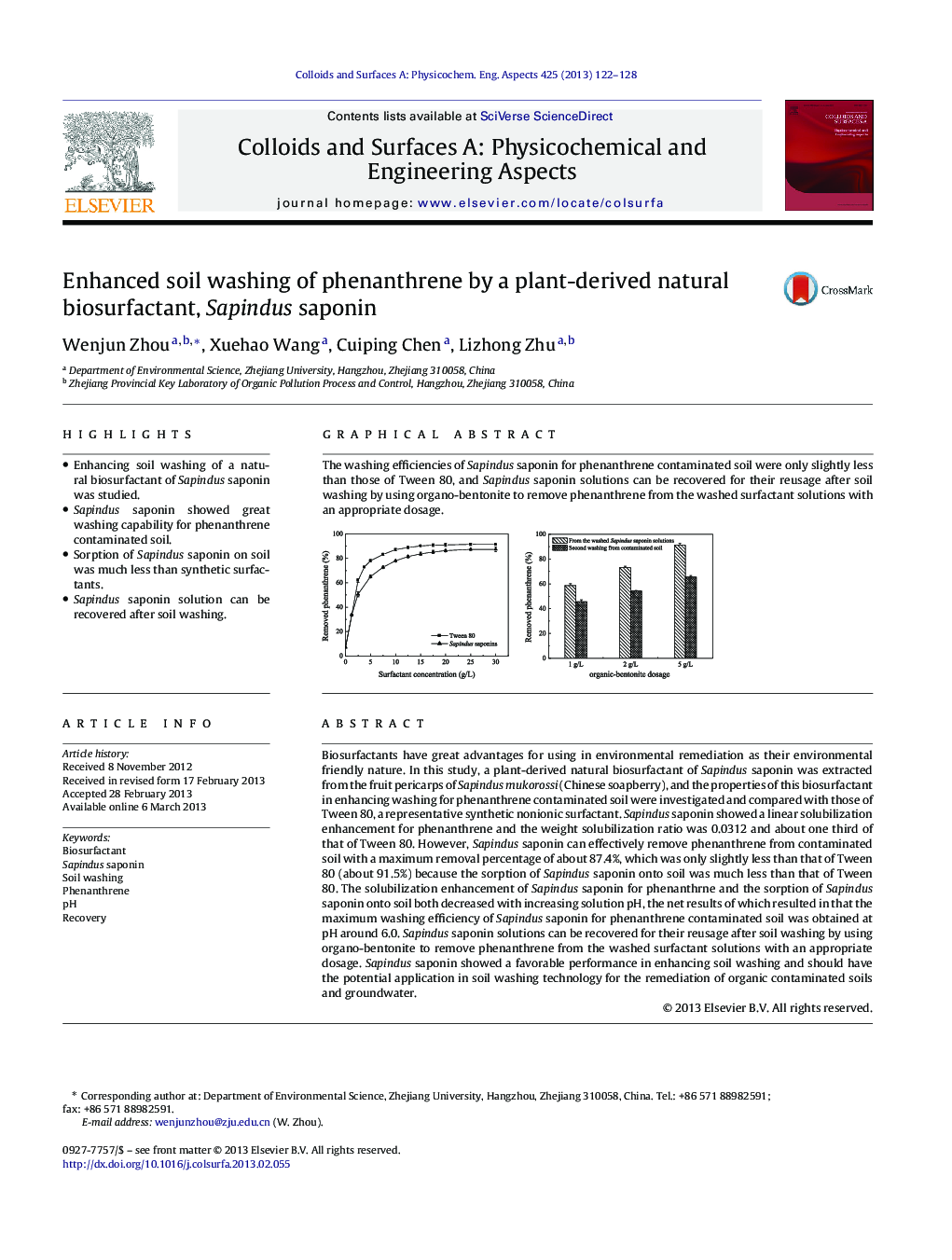| Article ID | Journal | Published Year | Pages | File Type |
|---|---|---|---|---|
| 593606 | Colloids and Surfaces A: Physicochemical and Engineering Aspects | 2013 | 7 Pages |
•Enhancing soil washing of a natural biosurfactant of Sapindus saponin was studied.•Sapindus saponin showed great washing capability for phenanthrene contaminated soil.•Sorption of Sapindus saponin on soil was much less than synthetic surfactants.•Sapindus saponin solution can be recovered after soil washing.
Biosurfactants have great advantages for using in environmental remediation as their environmental friendly nature. In this study, a plant-derived natural biosurfactant of Sapindus saponin was extracted from the fruit pericarps of Sapindus mukorossi (Chinese soapberry), and the properties of this biosurfactant in enhancing washing for phenanthrene contaminated soil were investigated and compared with those of Tween 80, a representative synthetic nonionic surfactant. Sapindus saponin showed a linear solubilization enhancement for phenanthrene and the weight solubilization ratio was 0.0312 and about one third of that of Tween 80. However, Sapindus saponin can effectively remove phenanthrene from contaminated soil with a maximum removal percentage of about 87.4%, which was only slightly less than that of Tween 80 (about 91.5%) because the sorption of Sapindus saponin onto soil was much less than that of Tween 80. The solubilization enhancement of Sapindus saponin for phenanthrne and the sorption of Sapindus saponin onto soil both decreased with increasing solution pH, the net results of which resulted in that the maximum washing efficiency of Sapindus saponin for phenanthrene contaminated soil was obtained at pH around 6.0. Sapindus saponin solutions can be recovered for their reusage after soil washing by using organo-bentonite to remove phenanthrene from the washed surfactant solutions with an appropriate dosage. Sapindus saponin showed a favorable performance in enhancing soil washing and should have the potential application in soil washing technology for the remediation of organic contaminated soils and groundwater.
Graphical abstractThe washing efficiencies of Sapindus saponin for phenanthrene contaminated soil were only slightly less than those of Tween 80, and Sapindus saponin solutions can be recovered for their reusage after soil washing by using organo-bentonite to remove phenanthrene from the washed surfactant solutions with an appropriate dosage.Figure optionsDownload full-size imageDownload as PowerPoint slide
